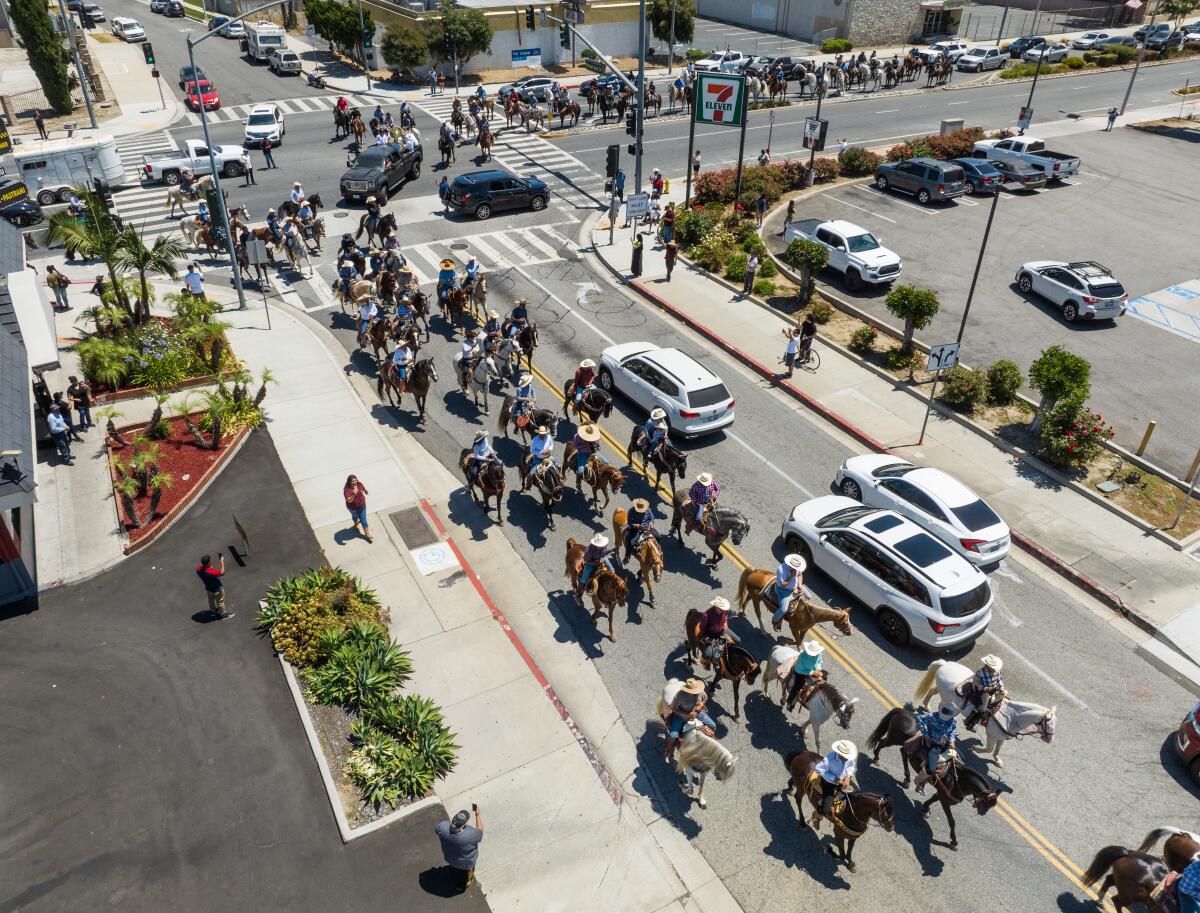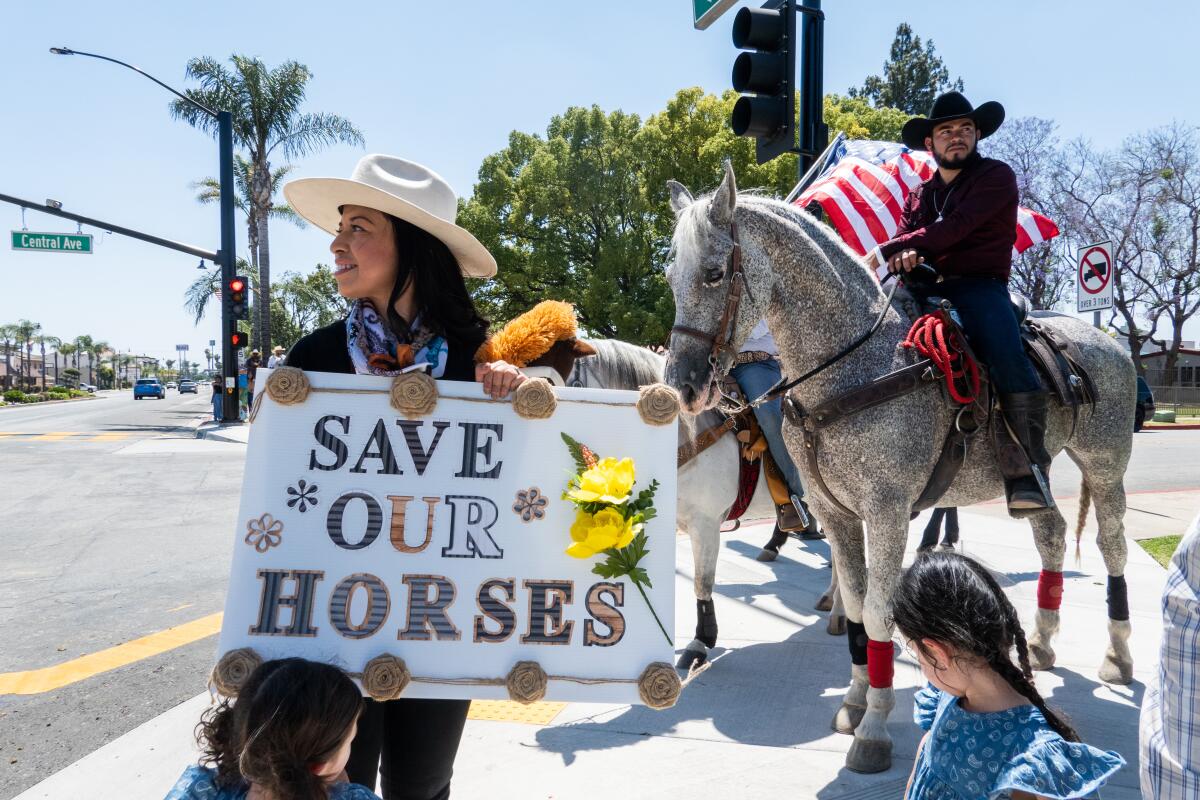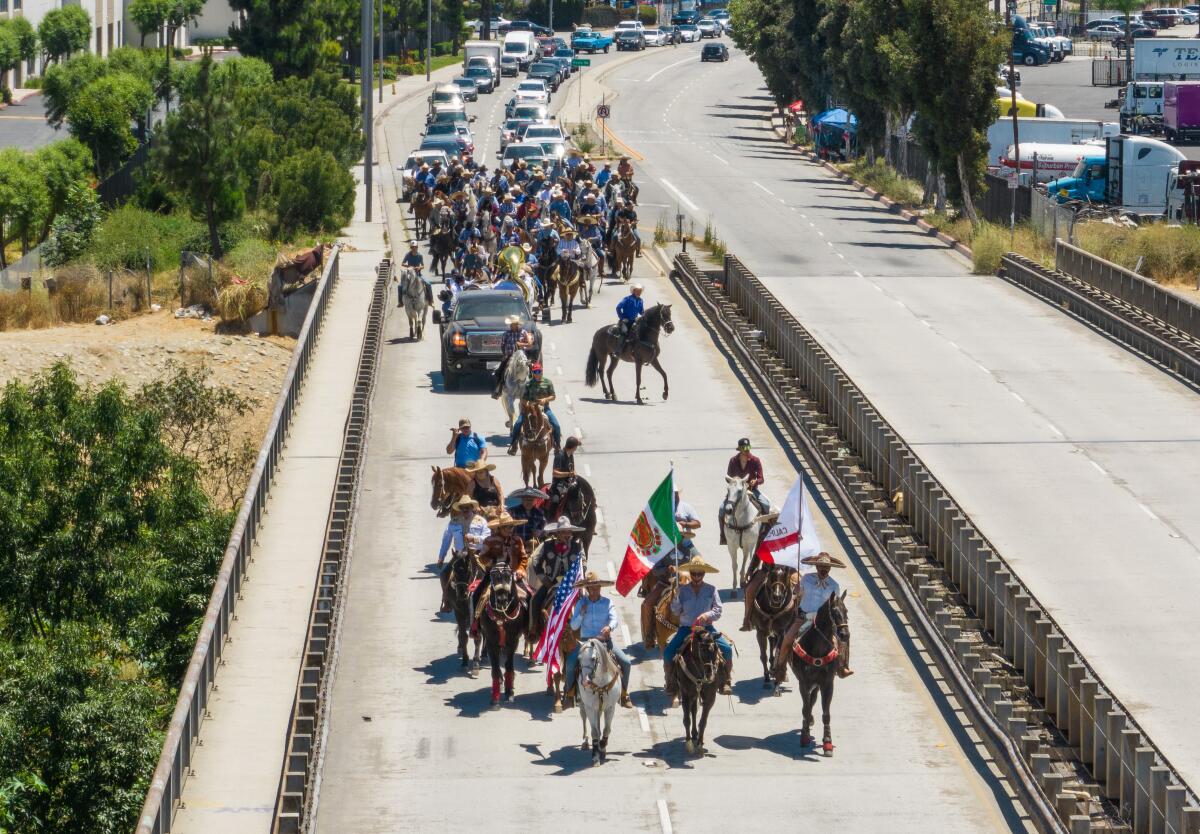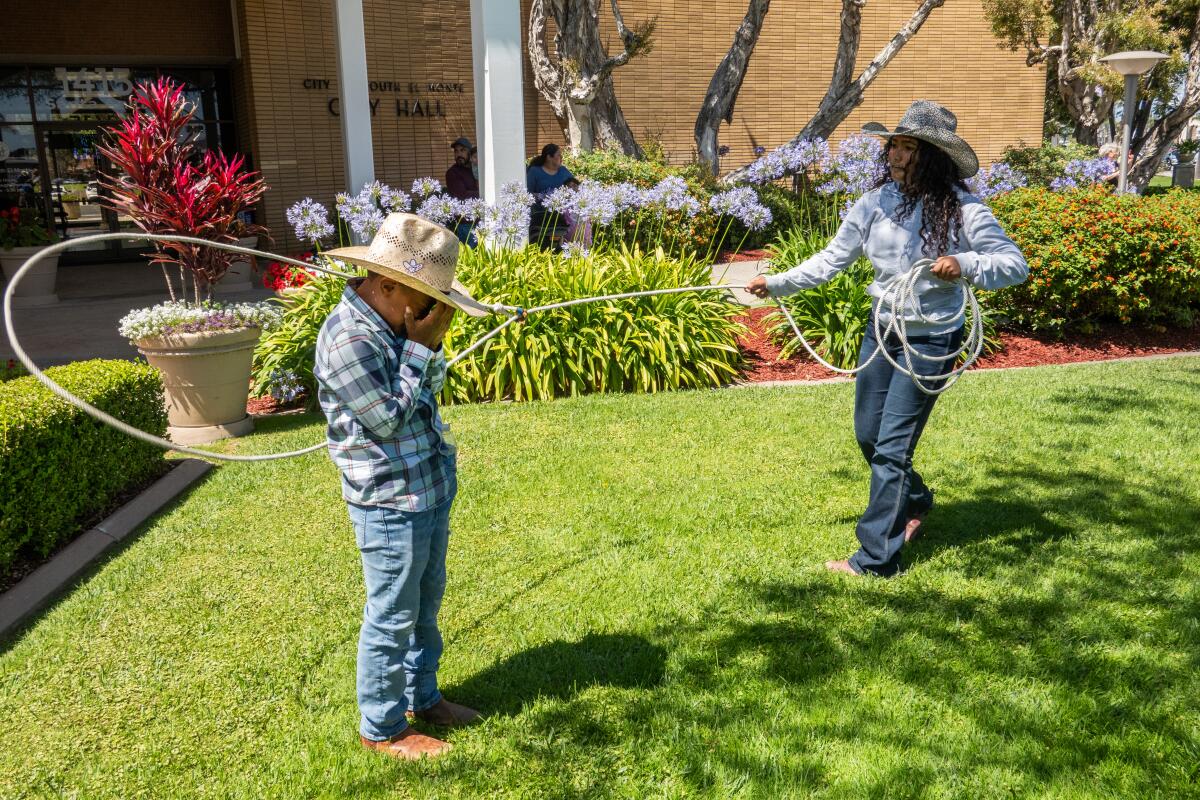Horseback riders celebrate ‘equestrian lifestyle’ in San Gabriel Valley. Can it survive?

On Saturday afternoon, drivers passing through South El Monte experienced a slowdown in traffic unusual for suburban L.A. County, when more than 100 horseback riders paraded through the streets to celebrate the equestrian lifestyle and urge protection for rural areas.
The mainly Latino and Latina riders from across the San Gabriel Valley wore traditional Mexican boots and gear, including sombreros and cowboy hats. They brought their horses from their homes and nearby stables. Some made their horses dance to banda music played by musicians sitting in the back of a pickup truck that slowly wove between the procession.
The cabalgata, as these horse parades are called in Spanish, was not unlike many religious and festive processions that occur in rural areas of Mexico. But according to organizer Samuel Brown Vazquez, it was the first time that the communities of South El Monte, Pellissier Village and Avocado Heights — which meet up around the intersection of the 60 and 605 freeways — came together for such a procession, albeit with a different take on the tradition.
“It could also be political,” said Brown Vazquez, a horse rider who is part of an environmental justice organization called Avocado Heights Vaquer@s. “It could also be a way for us as a community to recognize that our culture, our tradition is something that we have to, as citizen constituents, engage in a political process to preserve (and) to advance, to be able to pass it down to the next generation.”

In the past three months, members of unincorporated areas in the San Gabriel Valley have come together to express their worry that planned zoning changes in horse-keeping areas in Avocado Heights, and code enforcement practices across residential equestrian zones, were posing a danger to their agrarian culture and ability to keep horses at their homes. Under the name of Union de Ranchos SGV, they came together in April to voice their concerns to county officials and to open a platform for other residents to express their grievances.
The district and the department of regional planning have since taken steps to address these concerns, revising zoning policy to ensure horse-keeping communities are not affected by the area’s plans to increase housing opportunities. They’ve also organized meetings to work through the permitting system with residents and to ensure that it is balanced and handled equitably, LA County District 1 Supervisor Hilda L. Solis said in a statement to The Times.
“We are collectively trying to work with owners to legalize unpermitted stables while also addressing health concerns from neighbors,” Solis said in her statement. “A balancing act is always necessary, but we’ve made great strides in finding ways to streamline the permitting system and making it easier to bring certain areas up to standards.”
Still, Brown Vazquez said the community worries that California legislation to address the statewide housing crisis by streamlining the process to subdivide lots, along with growing interest from warehouse and luxury condo developers who want to build in the area, mean that these rural spaces are in long-term danger of disappearing.
“We look forward to an ongoing collaboration with the county, but we [moved] forward with protests because there’s a larger issue here,” Brown Vazquez said.

In June, the planned cabalgata morphed from a protest to a demonstration of unity from horse owners in unincorporated San Gabriel Valley areas, said organizer Samuel Barragán. Social justice groups and neighboring residents who kept their horses in stables joined together in solidarity.
“This is to open everyone’s eyes to the fact that we want this to continue and flourish, to become something bigger, something positive for the community,” said Barragán, who led the procession carrying a large American flag, alongside riders carrying a Mexican flag modified to incorporate the Virgen de Guadalupe in the middle, and a California state flag.
Some riders gathered in Whittier’s Blackwill Equestrian Park on Saturday afternoon and made their way toward South El Monte City Hall, passing under highways, bridges and through residential neighborhoods. Their families followed closely behind in cars. A few rode bikes and scooters and stopped at intersections to help redirect traffic.
“It was a beautiful experience. I was very happy to see so many people get together,” said Salvador Gaitan, who was wearing a traditional brown shirt with woven patterns.
“Life here is indescribable. I have hens, I have goats, I have my horses, and if I feel sick I feed them and it’s my medicine,” he said. “It’s a small part of Mexico that we have in our hearts and we bring to the United States.”

Avocado Heights resident Esly Flores, who rode wearing a red rose in her hair and bright red lipstick to match, said she came to support the right for community members to keep horses at their homes.
“They’ve really helped me emotionally,” she said of living with horses, as she patted her own, whose mane she had elaborately braided. “It’s like a form of therapy.”
When the procession got to South El Monte City Hall, riders moved to both sides of Santa Anita Avenue to let cars pass and listened to speakers who set up a microphone in the grassy area in front of the building. Organizers from Union de Ranchos, a priest and a representative from the Clean Air Coalition spoke about community resilience.
After the rally, the procession made its way back to the equestrian park. Many stayed around to socialize and sing karaoke with their neighbors, sharing memories of the many years they had spent living with their horses.
“We see how not just communities from Avocado Heights but equestrian communities throughout the San Gabriel Valley Area turned out in pretty large numbers,” said organizer Nayellie Diaz, who lives in nearby La Puente. “That just goes to show how united our people are in preserving our culture and essentially our way of life.”
More to Read
Sign up for Essential California
The most important California stories and recommendations in your inbox every morning.
You may occasionally receive promotional content from the Los Angeles Times.











